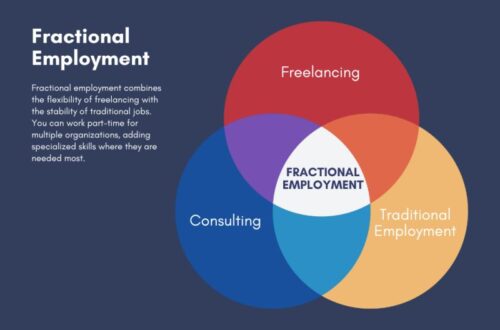-
Lending vs Investment: What’s the Right Funding Route for Your Business?
For start-ups and growing businesses, securing capital is essential—but the method of raising it can have lasting implications. Two of the most common routes are lending (debt financing) and investment (equity financing). Each comes with unique benefits and drawbacks depending on your business model, stage of growth, and risk appetite.
Below, we unpack the pros and cons of each to help founders and business leaders make more informed decisions.
Lending (Debt Financing)
Debt financing involves borrowing money that must be repaid over time, usually with interest. This could be in the form of bank loans, government schemes, revenue-based finance, or alternative lenders.
✅ Pros of Lending
- You retain full ownership
Unlike equity investment, loans don’t dilute your shareholding. This is ideal for founders who want to maintain control. - Predictable repayment terms
Debt is structured: regular repayments with defined timelines make planning easier (as long as cash flow supports it). - Tax-deductible interest
Interest payments on debt are often tax-deductible, which can reduce your tax burden. - Speed and simplicity
Certain forms of lending (like revenue-based or short-term working capital loans) can be quicker and less complex than negotiating an equity deal. - Improves credit profile
Successfully managing debt builds your business’s creditworthiness, making future borrowing easier.
❌ Cons of Lending
- Cash flow pressure
Fixed repayments must be made regardless of business performance, which can strain cash flow—especially in early or volatile stages. - Personal guarantees and collateral
Many lenders require founders to personally guarantee loans or offer business assets as security. - Harder to access at early stage
Pre-revenue start-ups or businesses with limited trading history often struggle to access meaningful debt without strong collateral or credit. - Covenants and restrictions
Some loans come with covenants (restrictions on business activities), which can limit flexibility.
Investment (Equity Financing)
Equity financing involves raising capital by selling shares in your business to investors—angel investors, venture capital firms, private equity, or crowdfunding platforms.
✅ Pros of Investment
- No immediate repayments
Investors take a long-term view and typically only see returns when the business exits (e.g., IPO or sale). This frees up cash in the short term. - Strategic value and networks
Investors often bring expertise, connections, and credibility. Good investors can accelerate growth beyond capital alone. - Risk-sharing
Investors share in both upside and downside. If the business underperforms, you don’t owe them repayments like with debt. - Enables aggressive growth
Equity funding allows for big, upfront investments into product, talent, and market expansion without repayment pressure.
❌ Cons of Investment
- Dilution of ownership
Selling equity means giving up a portion of your company. Over multiple rounds, founders can lose majority control. - Investor influence
With ownership comes power. Investors may seek board seats, veto rights, or decision-making authority. - Longer and more complex process
Raising investment can take months, with due diligence, negotiations, and legal paperwork. - Exit expectations
Investors are typically focused on achieving a strong financial return—often requiring a sale or IPO within 5–10 years. This can clash with a founder’s vision or timeline.
When to Choose Lending vs Investment
Scenario Lending (Debt) Investment (Equity) Early-stage with no revenue ❌ Risky or unavailable ✅ Common route (e.g., angel or VC) Stable cash flow business ✅ Strong fit ❌ Less attractive to equity investors Growth-focused, capital intensive ❌ High repayment risk ✅ Best suited for scale-up funding Want to maintain control ✅ No dilution ❌ Requires share giveaways Need strategic partners ❌ Purely transactional ✅ Can add strategic value Need cash quickly ✅ Some lenders fast ❌ Equity can take months to close Final Thoughts
There’s no one-size-fits-all solution. The right funding path depends on your:
- Stage of growth
- Risk profile
- Cash flow
- Appetite for dilution
- Need for strategic input
Many businesses eventually use a hybrid approach—mixing debt and equity across different stages to maximise flexibility and control. The key is understanding the trade-offs and aligning your funding strategy with your long-term vision.
- You retain full ownership
-
Inside the M&S Cyberattack: Anatomy, Impact, and Lessons for Every Organisation
In April 2025, British retail giant Marks & Spencer (M&S) became the latest high-profile victim of a sophisticated cyberattack. The breach had devastating consequences: personal data from nearly 10 million customers was stolen, core operations were disrupted, and hundreds of millions in value were wiped off the business. While cyberattacks are no longer a rare event, the M&S incident is notable for its scale, its execution, and the warning it sends to businesses of all sizes.
Anatomy of the M&S Cyberattack
Entry Point: Third-Party Access Exploited
The attackers, identified as the advanced persistent threat (APT) group Scattered Spider, gained access to M&S systems via a third-party contractor with privileged system access. This supply chain vulnerability allowed them to bypass M&S’s direct defenses.
This is a classic example of a supply chain compromise: where trusted external partners become the weakest link. The attackers reportedly used social engineering tactics and credential stuffing to escalate access once inside, enabling lateral movement across M&S systems over a 52-hour period—a window long enough to exfiltrate large volumes of customer data before detection.
Tactics and Tools Used
According to reports, the attackers deployed custom malware and used living-off-the-land techniques—leveraging legitimate system tools to avoid detection. Log files and system telemetry indicate that the group had detailed knowledge of M&S’s infrastructure, likely gained through weeks of reconnaissance.
Their goals were twofold:
- Data theft (PII from customers)
- Operational sabotage—crippling logistics and internal IT systems
Delayed Detection
One of the most alarming elements of the attack was the detection delay. M&S’s systems reportedly took over two days to identify suspicious activity, during which significant damage occurred. Once detected, M&S had to rapidly shut down several systems to prevent further data loss, leading to immediate operational disruption.
Impact on the Business
Operational Disruption
- E-commerce and delivery systems were frozen, with online orders halted temporarily.
- M&S’s integration with Ocado—a key grocery delivery partner—was disrupted, creating knock-on effects on fulfilment and logistics.
- Stores were forced to revert to manual operations, which significantly reduced efficiency and led to increased product waste and loss of perishable stock.
Financial Fallout
- M&S estimates a £300 million hit to operating profit in FY 2025, a combination of revenue loss, remediation costs, and customer compensation.
- Additional costs included:
- Crisis response and forensic IT investigations
- Cybersecurity consultancy fees
- Temporary staff to support disrupted operations
- Investments in new digital infrastructure and upgrades
Reputational Damage
- Customer trust took a major hit, with over 9.4 million customers affected.
- While payment card data and passwords were reportedly not compromised, the stolen data included:
- Full names
- Addresses
- Dates of birth
- Order history
- The breach prompted a social media backlash, and M&S’s customer service channels were inundated with complaints and queries.
Legal and Regulatory Risks
- M&S is now facing a class-action lawsuit in the UK over failure to adequately protect customer data.
- The Information Commissioner’s Office (ICO) has launched an investigation, and potential GDPR fines could be significant depending on the findings.
Market Reaction
- On the day of the announcement, M&S shares fell by over 10%, wiping more than £1 billion off the company’s market value.
- Analysts have revised earnings expectations downward and flagged operational risk in future outlooks.
Lessons for Other Organisations
1. Third-Party Risk Must Be a Board-Level Priority
Third-party vendors with system access need to be treated as critical parts of your infrastructure. Continuous monitoring, stringent access controls, and rigorous vetting are essential. Zero-trust architecture and least-privilege policies can help reduce risk exposure.
2. Invest in Proactive Threat Detection
Long dwell times—like the 52 hours in the M&S attack—are often the result of outdated or under-resourced monitoring. Continuous threat hunting, real-time detection systems, and AI-based anomaly detection tools should be considered essentials, not luxuries.
3. Cyber Insurance Is Not a Catch-All
While M&S reportedly had cyber insurance, the coverage limit was quickly exceeded. Organisations need to understand policy exclusions, caps, and coverage details thoroughly. Insurance should complement—not replace—robust internal preparedness.
4. Communication and Crisis Management Are Crucial
M&S was praised for transparent customer communication, but delays in the initial notification created uncertainty. A pre-planned cyber crisis communications strategy, aligned across PR, legal, IT, and executive teams, can protect trust in the heat of an incident.
5. Prioritise Data Minimisation and Encryption
If you don’t need it, don’t store it. Where storage is necessary, encryption and tokenisation should be enforced as standard. GDPR encourages this, but compliance should be seen as the floor, not the ceiling.
6. Simulate, Train, Repeat
Cyberattack simulations (tabletop exercises) ensure that leadership teams and key departments are not improvising during a real crisis. Regular training helps refine your response and reduce human error—the most common breach factor.
Final Thoughts
The M&S cyberattack is more than a cautionary tale—it’s a live case study in how even well-established, digitally mature businesses can be brought to a standstill by a well-orchestrated cyber incident. It reinforces the reality that cybersecurity is no longer just an IT issue—it’s a business continuity issue.
Every organisation, from SMEs to multinational corporations, should take note: cyber resilience is now a critical part of strategic risk management. Those who invest in it will be better positioned to survive and recover. Those who don’t may not get the chance.
-
The Evolving Geography of Start-Ups and Investors in the UK
The United Kingdom has long been recognised as a hotbed for entrepreneurial activity and investment. While London remains the undisputed hub of venture capital and start-up activity, the geographic distribution of both start-ups and investors is shifting, reflecting a more regionally balanced ecosystem. From the innovation corridors of the South East to the tech clusters of the North, the UK’s start-up geography is diversifying—and fast.
London: The Dominant Powerhouse
London continues to dominate the UK start-up scene. It attracts around 60-70% of the country’s venture capital funding, driven by its density of investors, world-class universities, global connectivity, and a rich pool of tech talent. The capital is home to influential tech clusters in Shoreditch, King’s Cross, and Canary Wharf, with sectors like fintech, AI, and SaaS flourishing.
Major VC firms such as Balderton Capital, LocalGlobe, and Atomico are headquartered in London, reinforcing the city’s role as the nation’s financial and innovation epicentre. However, London’s high costs and competitive landscape have prompted many start-ups to look elsewhere for growth opportunities.
Beyond the Capital: The Rise of Regional Start-Up Hubs
1. Cambridge and Oxford – Deep Tech and Life Sciences
The so-called “Golden Triangle” of London-Oxford-Cambridge remains a high-growth region. Cambridge is a global centre for deep tech and life sciences, supported by the University of Cambridge and the renowned Cambridge Science Park. Oxford, similarly, has become a magnet for biotech start-ups and university spinouts, particularly in the wake of the Oxford-AstraZeneca COVID-19 vaccine success.
2. Manchester – Northern Tech Capital
Manchester is positioning itself as the Northern Powerhouse for start-ups. The city has a thriving digital and creative sector, driven by talent from the University of Manchester and supported by initiatives like Tech Nation North. Notable start-ups and scale-ups include The Hut Group and Peak AI. Investors such as Praetura Ventures and Northern Gritstone are based in the region, providing vital early-stage capital.
3. Leeds, Sheffield, and Newcastle – Growing Innovation Clusters
These Northern cities are seeing a surge in start-up activity, especially in healthtech, data science, and digital services. Accelerators like Barclays Eagle Labs, Entrepreneurial Spark, and regional tech hubs are helping fuel the momentum. Leeds, in particular, benefits from its proximity to NHS Digital and a robust financial services sector.
4. Bristol and Bath – Creative and CleanTech Ecosystem
The South West has emerged as a centre for creative industries, robotics, and clean technology. Bristol’s Engine Shed and the Bristol & Bath Science Park are focal points for innovation. The area is particularly strong in immersive technologies, with a collaborative ecosystem that includes universities and research institutions.
5. Scotland – Fintech and Renewable Innovation
Edinburgh and Glasgow are key Scottish hubs with growing ecosystems. Fintech Scotland and organisations like Scottish Enterprise are supporting a dynamic environment for financial innovation, AI, and renewables. Edinburgh is home to unicorns like Skyscanner and has a vibrant angel investment community.
Investors Are Becoming More Regional
Traditionally, investors were concentrated in London, but that is starting to change. Regional VC firms, government-backed funds (e.g. British Business Bank’s Regional Angels Programme), and angel syndicates are becoming more active across the UK. Examples include:
- Northern Gritstone (North of England)
- Midven (Midlands)
- Par Equity (Scotland)
- Green Angel Syndicate (nationwide, but with a green focus)
- Development Bank of Wales
Government and public sector support, such as Innovate UK grants, catapult centres, and levelling-up initiatives, are helping to plug funding gaps and encourage innovation outside the capital.
Challenges and Opportunities
Despite the positive trends, regional start-ups still face challenges in accessing later-stage capital and scaling support. While early-stage funding is growing across the UK, large Series B and C rounds are still disproportionately concentrated in London.
However, remote work trends, improved digital infrastructure, and a cultural shift toward regional economic development present a significant opportunity. As investors increasingly look beyond London, a more geographically inclusive innovation economy is within reach.
Conclusion
The UK’s start-up and investor landscape is undergoing a quiet transformation. While London remains the gravitational centre, regional hubs are growing in strength and identity, fuelled by local talent, sectoral specialisation, and a more decentralised approach to investment. The next decade could see a more balanced, resilient, and innovation-driven economy spread across the entire UK map.
-
How important is cyber-security to an investor?
Introduction
Cyber security is increasingly critical to investors as it directly impacts a company’s operational resilience, regulatory compliance, and reputation—key factors that influence financial performance and valuation. In today’s digitized economy, a single data breach can result in significant financial loss, legal liabilities, customer attrition, and long-term brand damage.
Investors are acutely aware that inadequate cyber risk management can compromise intellectual property, disrupt supply chains, and trigger regulatory fines, all of which erode shareholder value. As a result, robust cyber security is now seen not just as an IT function, but as a core governance and risk consideration in investment decisions—particularly for ESG-conscious investors seeking sustainable, future-proof assets.
During due diligence, investors view cybersecurity as a critical area of risk and value protection, especially in sectors reliant on data, digital infrastructure, or regulatory compliance. Here’s a structured outline of how they assess it:
1. Cybersecurity Governance
- Board oversight: Is there board-level awareness and responsibility for cybersecurity?
- Policies and frameworks: Are there formal policies in place (e.g., based on NIST, ISO 27001)?
- CISO/leadership: Does the company have a Chief Information Security Officer (CISO) or equivalent?
2. Risk Management and Threat Posture
- Risk assessments: Are cyber risks regularly identified and assessed?
- Incident history: Has the company suffered prior breaches? How were they handled?
- Threat detection: What monitoring systems and controls are in place (e.g., SIEM, EDR)?
3. Data Protection and Privacy
- Data classification: How is sensitive data identified and managed?
- Compliance: Does the company comply with GDPR, CCPA, HIPAA, etc.?
- Encryption and access control: Are strong controls in place to protect data at rest and in transit?
4. Incident Response and Resilience
- Incident Response Plan (IRP): Is there a clear, tested plan in place?
- Disaster recovery / Business continuity: Are backups tested and infrastructure resilient?
- Insurance: Is there cyber insurance coverage, and is it adequate?
5. Third-Party and Supply Chain Risk
- Vendor management: Are third-party vendors assessed for cybersecurity risk?
- Contracts: Are SLAs and legal agreements in place to mitigate third-party breaches?
6. Technology Stack and Vulnerabilities
- Tech due diligence: Are systems and software up to date and patched?
- Penetration testing: Have vulnerability assessments or penetration tests been conducted recently?
- Legacy systems: Are there outdated or unsupported systems still in use?
7. Financial Impact of Cyber Risk
- Cost of breaches: Are there historical or potential costs related to breaches (legal, reputational, regulatory)?
- Valuation adjustments: Investors may adjust valuation or require warranties/indemnities if risk is high.
8. Positive Indicators Investors Look For
- Strong cyber hygiene (MFA, encryption, user training)
- Certifications (ISO 27001, SOC 2)
- Clean breach history with documented improvements
- Proactive security culture and leadership commitment
How big is the problem?
According to the UK Government’s Cyber Security Breaches Survey 2024, approximately 50% of UK businesses and 32% of charities reported experiencing some form of cyber security breach or attack within the past 12 months.
The prevalence of such incidents varies by organization size:
- Medium-sized businesses: 70% reported breaches
- Large businesses: 74% reported breaches
- High-income charities (annual income over £500,000): 66% reported breaches
The most commonly reported type of cyber threat was phishing attacks, affecting 84% of businesses and 83% of charities that experienced a breach.
Those statistics sound pretty bad but are likely the tip of the iceberg. Lockbit Ransom, a notorious cyber was recently itself hacked and the breach, which has defaced the group’s dark web affiliate panels, includes the leak of a MySQL database dump containing critical records related to the gang’s activities. It suggests that a lot of companies have been successfully attacked by the group:
- ‘btc_addresses’ Table: Contains 59,975 unique Bitcoin addresses, likely used for ransom payments and laundering transactions.
- ‘chats’ Table: Perhaps the most damning, this table includes 4,442 negotiation messages between LockBit operators and victims, spanning from 19th December 2024 to 29th April 2025.
Why don’t companies report attacks?
Companies do not report cyber-attacks for several key reasons:
- Reputational Risk: Admitting to a breach can damage a company’s brand, erode customer trust, and lead to lost business.
- Stock Price Impact: Publicly traded companies may fear that disclosing an attack will negatively affect their stock price.
- Legal and Regulatory Exposure: Reporting an incident may invite scrutiny from regulators or lead to lawsuits, especially if sensitive customer data was compromised.
- No Legal Obligation (in some cases): In certain jurisdictions or types of attacks (like those not involving personal data), there may be no mandatory reporting requirement.
- Ongoing Investigations: Some companies delay disclosure to avoid tipping off attackers or interfering with law enforcement investigations.
- Internal Culture or Lack of Preparedness: Companies without strong cybersecurity policies may not have clear procedures for handling and reporting incidents.
What laws govern cyber-security and reporting
United Kingdom
UK GDPR & Data Protection Act 2018
- Who must report: Any organisation that experiences a personal data breach likely to risk individuals’ rights and freedoms.
- Deadline: Report to the Information Commissioner’s Office (ICO) within 72 hours of becoming aware of the breach.
Network and Information Systems (NIS) Regulations
- Who must report: Operators of Essential Services (OES) and Relevant Digital Service Providers (RDSPs).
- Deadline: Notify the relevant authority (e.g., ICO for RDSPs) without undue delay and no later than 72 hours after becoming aware of the incident.
Cyber Security and Resilience Bill (Proposed)
- Introduced in July 2024, this bill aims to strengthen the UK’s cyber defences by expanding reporting requirements, including mandatory ransomware incident reporting. It seeks to align UK regulations more closely with the EU’s NIS2 directive
European Union
General Data Protection Regulation (GDPR)
- Who must report: Data controllers experiencing a personal data breach likely to result in a risk to individuals’ rights and freedoms.
- Deadline: Notify the relevant supervisory authority within 72 hours of becoming aware of the breach.
NIS2 Directive (Directive (EU) 2022/2555)
- Who must report: Essential and important entities across various sectors, including energy, transport, health, and digital infrastructure.
- Deadline: Report significant incidents to the relevant national authority within 24 hours of becoming aware, with a final report due within 72 hours.
Cyber Resilience Act (Proposed)
- Who must report: Manufacturers of digital products and software.
- Deadline: Report actively exploited vulnerabilities and severe incidents to ENISA and the relevant national Computer Security Incident Response Team (CSIRT) within 24 hours, followed by a detailed report within 72 hours.
United States
Cyber Incident Reporting for Critical Infrastructure Act (CIRCIA)
- Who must report: Entities in critical infrastructure sectors.
- Deadline: Report covered cyber incidents to the Cybersecurity and Infrastructure Security Agency (CISA) within 72 hours of reasonably believing an incident has occurred. Ransomware payments must be reported within 24 hours.
Securities and Exchange Commission (SEC) Rules
- Who must report: Public companies.
- Deadline: Disclose material cyber incidents within four business days of determining the incident’s material impact.
State-Level Data Breach Notification Laws
- Who must report: Varies by state; generally, any entity handling personal information.
- Deadline: Varies by state; most require notification without unreasonable delay, often within 30 to 60 days.
-
The Global Landscape of Entrepreneurs and Start-Up Businesses
Entrepreneurship is a cornerstone of innovation and economic dynamism across the globe. As technology reshapes industries and societies evolve, the distribution of start-ups and entrepreneurial activity is shifting rapidly. This article presents an updated overview of global start-up ecosystems with key statistics and future projections.
Global Start-Up Snapshot (2024 Estimates)
- Total Global Start-Ups: Over 430 million entrepreneurs worldwide (GEM 2023 Report).
- Start-Up Valuation: Global start-up economy valued at $6.4 trillion (Startup Genome, 2024).
- Unicorns: Over 1,400 unicorns globally as of Q1 2024 (CB Insights), with most based in the U.S., China, and India.
- Venture Capital Funding: Global VC funding reached $285 billion in 2023, down from a peak of $620 billion in 2021, but stabilizing after correction.
Regional Analysis & Market Data
North America
- U.S.: Hosts over 60% of global unicorns; Silicon Valley alone contributed $1.1 trillion in start-up value.
- Canada: Toronto and Vancouver are emerging leaders, with Canada ranking #4 globally in ease of starting a business (World Bank, 2023).
Europe
- Europe produced over 150 unicorns as of 2024, with London, Berlin, and Paris leading.
- Total VC investment in European start-ups was $55 billion in 2023 (Atomico).
- Key growth sectors: fintech, greentech, AI.
Asia-Pacific
- China: Home to over 300 unicorns, second only to the U.S.
- India: Ranked third globally with ~110 unicorns; $25 billion in VC funding in 2023.
- Southeast Asia: Raised $11 billion in VC funding in 2023, led by Indonesia, Vietnam, and Singapore.
Latin America
- VC investment in Latin America exceeded $7 billion in 2023, recovering from a dip post-2021.
- Brazil has 25+ unicorns; fintech accounts for 40% of start-up investment.
- Mexico and Colombia follow, with growing SaaS and e-commerce ecosystems.
Africa
- African start-ups raised $3.5 billion in 2023 (Partech Partners).
- Top countries: Nigeria (33% of total funding), Kenya, Egypt, South Africa.
- Sectors: Fintech (over 60% of all funding), logistics, and climate-tech.
Key Drivers of Global Entrepreneurial Growth
- Digital Adoption: Internet access now reaches 66% of the global population (ITU, 2024), fueling digital start-up formation.
- Youth Demographics: Over 60% of Africa’s population is under 25, creating fertile ground for entrepreneurship.
- Remote Work: Over 50% of start-ups globally operate with hybrid or fully remote teams, reducing dependence on major cities.
- Sustainability Focus: ESG-focused start-ups attracted over $70 billion in funding in 2023, particularly in Europe and Asia.
Future Outlook and Forecasts
1. Emergence of New Hubs
- Cities like Lagos, Ho Chi Minh City, Tbilisi, and Bangalore are forecast to be among the top 30 fastest-growing start-up ecosystems by 2030.
2. Global South Expansion
- The number of start-ups in Africa is expected to double by 2030, driven by infrastructure investment and mobile penetration.
3. Diversity and Inclusion
- Female-led start-ups received $6.5 billion in 2023—a rise of 30% year-over-year, but still only ~2.5% of total VC funding. This is forecast to grow significantly due to policy and funder commitments.
4. Sectoral Growth Forecast
- Healthtech market projected to reach $660 billion by 2027 (Statista).
- Climate tech start-ups expected to reach $1.5 trillion in valuation by 2030.
- Web3 and blockchain start-ups continue steady growth with $25 billion in new capital raised in 2023.
Conclusion
The global start-up ecosystem is expanding beyond its traditional boundaries, supported by digital access, investor interest, and shifting economic centers. While North America and Asia dominate in scale, the momentum in emerging markets—especially in Africa and Latin America—is accelerating. Entrepreneurs worldwide are no longer constrained by geography, and the future of innovation is poised to be more globally distributed, diverse, and inclusive than ever before.
-
“Clogs to Clogs in Three Generations”: Why Legacy Planning Matters Across Cultures
“Clogs to clogs in three generations” is an old English proverb that encapsulates a powerful economic and emotional truth: the hard-earned wealth of one generation is often squandered by the third. The saying warns of the all-too-common trajectory of family fortunes — earned through toil, enjoyed by the next, and lost by the third.
This pattern isn’t unique to Britain. Versions of the phrase appear across many cultures, suggesting it is a universal human story — one where the absence of planning, stewardship, and purpose can turn riches into ruin.
Origin of the Proverb
The phrase “clogs to clogs” refers to wooden shoes traditionally worn by the English working class during the Industrial Revolution. The saying implies that one generation begins in poverty (wearing clogs), the second builds wealth and status, and the third — lacking the struggle and values of the first — returns to poverty.
It reflects a cycle of creation, enjoyment, and dissipation:
- Generation 1: Builds wealth through hard work and sacrifice.
- Generation 2: Benefits from wealth, focuses on enjoyment and status.
- Generation 3: Fails to appreciate its origins, mismanages assets, and returns to the starting point.
Global Versions of the Same Story
This concept is echoed worldwide:
- China: “Wealth does not pass three generations” (富不过三代 – fu bu guo san dai).
- Japan: “The third generation ruins the house” (三代目が家を潰す).
- Italy: “From the stables to the stars and back again.”
- Scotland: “The father buys, the son builds, the grandchild sells.”
- United States: “Shirtsleeves to shirtsleeves in three generations.”
Each culture has recognised the fragile nature of unplanned wealth — and the psychological shift that can occur when legacy is not supported by education and responsibility.
Why Legacy Planning Is Essential
Despite the shared cultural wisdom, many families fail to translate these lessons into action. Legacy planning isn’t just about taxes or wills — it’s about preserving values, safeguarding assets, and instilling responsibility across generations.
Without legacy planning:
- Heirs may lack the financial education to manage wealth.
- Family conflict can arise from unclear intentions.
- Charitable aspirations or business legacies can be lost.
- Wealth is exposed to erosion through mismanagement, inflation, or litigation.
With legacy planning:
- Families clarify their goals and vision for the future.
- Wealth transitions smoothly through generations.
- Next generations are prepared through governance and education.
- Philanthropic or business legacies can endure long-term.
The Role of Wealth Management Firms
Sophisticated wealth firms play a critical role in breaking the “three generations” curse. Their services go beyond investment management to include:
- Multigenerational estate planning
- Family governance structures
- Trust and fiduciary services
- Philanthropic advisory
- Succession planning for businesses
- Education and mentorship for heirs
By combining financial tools with emotional intelligence and family engagement, wealth advisors help ensure that families don’t just pass on money — but also values, culture, and a shared sense of purpose.
Conclusion: Building a Legacy That Lasts
“Clogs to clogs in three generations” isn’t destiny — it’s a warning. With deliberate planning, communication, and expert guidance, families can break the cycle. Legacy planning isn’t just about preserving wealth — it’s about sustaining a family’s identity and influence long into the future.
In today’s rapidly changing world, that’s an investment no family can afford to overlook.
-
Where the UK’s Wealth Grows: Market Sectors and HNWI Distribution
High-net-worth individuals (HNWIs), typically defined as those with investable assets exceeding £1 million (excluding primary residence), play a crucial role in driving investment, philanthropy, and economic growth. In the UK, the concentration and creation of wealth are closely tied to a range of key industries, geographical clusters, and evolving trends.
This article breaks down the sectors generating the most HNWI wealth and maps where these individuals are predominantly located across the country.
Top UK Sectors Creating HNWIs
1. Finance & Asset Management
- Why it matters: The City of London remains Europe’s largest financial hub.
- HNWI creation: Investment banking, private equity, hedge funds, and family offices.
- Key areas: London, Edinburgh, Leeds.
2. Real Estate & Property Development
- Why it matters: UK property markets, especially in London and the South East, have delivered consistent capital growth.
- HNWI creation: Property developers, landlords, construction magnates.
- Key areas: London, Surrey, Cheshire, Bath, Bristol.
3. Technology & Digital Enterprises
- Why it matters: The UK tech scene is Europe’s largest and fastest growing.
- HNWI creation: Tech founders, scale-up entrepreneurs, digital service platforms.
- Key areas: London (Silicon Roundabout), Cambridge, Manchester, Bristol.
4. Legal & Professional Services
- Why it matters: High-billing legal, consulting and accountancy firms fuel personal wealth growth.
- HNWI creation: Senior partners, equity holders, M&A consultants.
- Key areas: London, Birmingham, Leeds, Manchester.
5. Pharmaceuticals & Life Sciences
- Why it matters: Biotech booms and government incentives have made life sciences a strong investment class.
- HNWI creation: Founders, scientists-turned-entrepreneurs, private investors.
- Key areas: Cambridge, Oxford, London.
6. Luxury Goods, Fashion & Lifestyle
- Why it matters: UK luxury brands (fashion, automotive, beauty) have global reach.
- HNWI creation: Brand founders, creative directors, ecommerce entrepreneurs.
- Key areas: London, Midlands, Edinburgh.
7. Entertainment, Media & Sport
- Why it matters: A growing ecosystem around sports, content, and streaming fuels new wealth.
- HNWI creation: Athletes, producers, media executives, creators.
- Key areas: London, Manchester, Glasgow, Liverpool.
8. Agriculture, Landed Estates & Natural Capital
- Why it matters: Traditional wealth remains concentrated in land, and environmental credits are unlocking new value.
- HNWI creation: Estate owners, regenerative farmers, land investors.
- Key areas: Scotland, Yorkshire, Norfolk, Cotswolds.
Where Are the HNWIs in the UK?
1. London & the South East
- Home to 50%+ of UK HNWIs.
- Dominated by finance, tech, property and legal professionals.
- Wealth centres: Kensington, Chelsea, Westminster, Richmond, Guildford.
2. Cheshire & Manchester Corridor
- Growing tech and property hub.
- Strong in private healthcare, sports, and entrepreneurial wealth.
- Towns like Alderley Edge and Wilmslow are HNWI hotspots.
3. Edinburgh & Glasgow
- Financial services and law remain strong.
- Family offices and asset managers concentrated in Edinburgh.
4. Bristol & Bath
- A mix of creative, tech, and property wealth.
- Popular with HNWIs relocating from London.
5. Cambridge & Oxford
- Science and tech innovation hotspots.
- Life sciences and academic spin-outs generate wealth.
6. Surrey, Hampshire, and Berkshire
- Traditionally wealthy commuter belt.
- Strong private equity and hedge fund presence.
7. Cotswolds & South West
- Second home and rural wealth communities.
- Appeal to retired HNWIs and lifestyle-focused entrepreneurs.
Looking Ahead: New Drivers of UK HNWI Growth
- Green Economy: Biodiversity net gain, carbon markets, and ESG funds are opening new frontiers for wealth.
- Web3 & Fintech: Crypto, blockchain and digital infrastructure firms are minting a new class of millionaires.
- Private Capital: Family offices are growing and shifting into direct investments.
- Lifestyle Migration: Remote working has spurred HNWIs to relocate to regional luxury hubs.
Conclusion
The UK’s high-net-worth population is evolving, driven by diversification across industries and geography. From fintech founders in Shoreditch to biotech scientists in Cambridge and property moguls in Cheshire, wealth creation is no longer confined to traditional financial centres. Understanding these shifts is essential for service providers, investors, and communities aiming to connect with and serve the UK’s most affluent individuals.
-
How Digital Sports Consumption is Evolving
Introduction
Sport is a cultural cornerstone in the UK, deeply embedded in identity, community, and tradition. But today, a technological revolution is changing how fans interact with, consume, and relate to sport. From streaming and on-demand access to athlete-led social media content and interactive fan experiences, the evolution is swift and irreversible. This article explores the current state and future outlook for major UK sports—football, rugby, golf, equine sports, tennis, and athletics—with a focus on how digital innovation is reshaping their delivery and audience engagement.
Football: The Streaming Standard Bearer
Football continues to dominate the UK’s sporting consciousness. The Premier League, Championship, and increasingly, the Women’s Super League, offer massive viewership.
Embracing Digital:
- Direct-to-consumer streaming is becoming central. Amazon Prime’s Premier League offering set a precedent with integrated stats and multi-angle viewing.
- NOW TV allows fans to purchase day passes rather than full subscriptions, making football more accessible.
- Club-owned media (e.g. Manchester United’s MUTV and Liverpool TV) provide exclusive content, interviews, and match footage to fans globally.
- Social media coverage, including live commentary, highlight reels, and memes, amplifies fan engagement.
What’s Next:
- AI-powered highlight reels, personalised content feeds, and fan-controlled camera angles.
- NFTs and digital collectibles offering exclusive fan experiences and ownership of memorable moments.
- Virtual stadiums and immersive match viewing through VR.
Rugby: Reinventing Its Identity
Rugby—both Union and League—faces a paradox. International matches attract millions, yet domestic leagues struggle.
Embracing Digital:
- Amazon Prime’s Autumn Nations Series delivered high-quality streaming and introduced many to subscription-based rugby.
- Clubs are now investing in behind-the-scenes documentary-style content to drive emotional fan investment.
- Live analytics and real-time stats are now part of coverage on TNT and the official Premiership Rugby app.
What’s Next:
- Data-driven coaching insights integrated into broadcasts for an expert-level experience.
- TikTok and Instagram Reels to simplify complex rules and showcase spectacular moments.
- Interactive fantasy rugby platforms to create active participation beyond match day.
Golf: The YouTube Powerhouse
Once considered a conservative sport, golf is now thriving thanks to tech-driven reform and the creator economy.
Embracing Digital:
- Sky Sports Golf integrates player biometrics, shot predictions, and AR enhancements.
- Influencers like Rick Shiels, Peter Finch, and Good Good Golf generate millions of YouTube views with relatable content.
- Apps like Arccos Golf and GolfShot allow amateurs to access PGA-level insights and shot tracking.
What’s Next:
- Virtual coaching and AR-powered driving ranges.
- Fan votes to determine pro challenges during exhibitions.
- Real-time audience interaction during live events through digital scorecards and commentary.
Equine Sports: Modernising Tradition
From horse racing to dressage, equine sports remain traditional but face pressure to modernise.
Embracing Digital:
- Racing TV and Sky Sports Racing now include form trackers, pace maps, and betting odds in real time.
- Virtual racing games are growing, simulating races for betting or entertainment.
- Event live streams such as Badminton and Burghley now incorporate multi-view and lifestyle content, blending with fashion and food coverage.
What’s Next:
- Wearable tech for horses providing biometrics to ensure health and fair play.
- Digital ticketing and event apps offering gamification, AR guides, and exclusive behind-the-scenes content.
- VR race previews and fan simulations for engagement at home.
Tennis: Beyond Wimbledon
While Wimbledon remains iconic, tennis is growing digitally across surfaces and seasons.
Embracing Digital:
- Discovery+ and Eurosport offer full-court, player-specific camera angles and second-screen stats.
- Ultimate Tennis Showdown (UTS) is a new short-form format built for streaming and digital highlights.
- Tennis TV and the ATP/WTA apps feature match replays, real-time statistics, and fan challenges.
What’s Next:
- AI opponent breakdowns for fan education and betting insight.
- Augmented reality courtside features at events like Queen’s Club.
- Personalised player feeds combining social content, interviews, and training sessions.
Athletics: Reigniting Relevance
Athletics enjoys peaks during Olympic and Commonwealth Games cycles but needs sustained year-round attention.
Embracing Digital:
- BBC and Discovery+ coverage now includes real-time splits, camera tracking, and biometric overlays.
- Athlete-created content on platforms like TikTok and YouTube is growing, with runners and jumpers telling their own stories.
- The Diamond League YouTube channel provides free access to world-class meets.
What’s Next:
- Interactive fan leagues and prediction contests to increase weekly engagement.
- City-based indoor events streamed globally with immersive production.
- Wearable fan kits that sync biometric data for shared experiences (e.g., your heart rate mirrors the athlete you follow).
Major Broadcasters & Streaming Platforms
Provider Sports Covered Key Digital Innovations Sky Sports / NOW Football, Golf, Racing, Rugby Interactive feeds, Shot Centre, betting integration TNT Sports Football, Rugby Enhanced mobile app, UEFA packages, youth content via TikTok Amazon Prime Video Football, Rugby User-controlled angles, live stats, multi-match streaming BBC & ITV Tennis, Athletics, Rugby, Major Events Public access, real-time analytics, youth digital programmes Discovery+ / Eurosport Tennis, Athletics Full-court streaming, multi-language support, Olympics coverage YouTube / TikTok All sports Athlete storytelling, influencer commentary, behind-the-scenes Tennis TV / ATP / WTA Tennis Personalised content, on-demand match viewing, fan challenges Key Trends Shaping the Next 5 Years
- Streaming Is Default: Fans now expect control, mobility, and flexibility in how they consume content.
- Athletes as Brands: Players and stars are building direct audiences, bypassing traditional media.
- Gamification and Fantasy: Participation through fantasy leagues, challenges, and predictions boosts attention.
- Short-form + Long-form Coexistence: TikTok, YouTube Shorts, and reels complement full match viewing.
- Augmented and Virtual Reality: Enhanced live experiences and remote participation are on the horizon.
- Sustainability and Inclusion: Eco-conscious events, equal media time for women’s sports, and Para sport inclusion are all rising.
Final Word
The UK sports industry stands at the intersection of tradition and technology. Whether it’s a TikTok tennis rally, an AI-analyzed rugby scrum, or a live VR view from the Grand National, fans now demand more than a seat in the stands. They want access, involvement, and personalisation.
For clubs, broadcasters, and leagues, success will hinge on embracing these tools to retain attention, build loyalty, and deliver unforgettable experiences—on and off the pitch.
-
🐝 The Idiot’s Guide to Biodiversity Net Gain (BNG) 🌳
What it is, how it works, and why it matters.
🌍 What Is Biodiversity Net Gain (BNG), Really?
Imagine you’re building houses, offices, or a new road. To do that, you may need to clear trees, dig up grassland, or disturb places where animals live. Biodiversity Net Gain (BNG) is a new rule that makes sure you don’t just take from nature – you give back more.
In other words, if you damage or destroy nature during a development, you must leave the environment in a better state than it was before. You’re not just putting things back how they were — you’re making things better, by at least 10%.
So, if a field filled with wildflowers and insects gets turned into homes, BNG says:
🌸 “You have to create more nature — either on-site or somewhere else — to make up for it.”
📏 How Much “Gain” Are We Talking About?
The UK government has set a 10% minimum gain. That means when developers calculate the biodiversity “score” of a site before they build, they must make sure the final result is 10% better — and it has to last for at least 30 years.
You can achieve that in three ways:
- On-site – Improve nature directly at the development site (e.g. plant wildflower meadows, new hedgerows, ponds).
- Off-site – Pay someone else (like a landowner) to improve or restore biodiversity on their land.
- Buy biodiversity credits – As a last resort, developers can buy government-issued credits if they can’t do either of the first two. But these credits are very expensive, so it’s not the preferred route.
🔄 How Is BNG Different From Carbon Credits?
At first glance, BNG might sound a lot like carbon credits, but they actually focus on different environmental issues.
- Carbon Credits: Designed to reduce carbon dioxide (CO₂) in the atmosphere, which helps slow down climate change. Common examples include tree planting or renewable energy investments.
- Biodiversity Net Gain: Focuses on improving and protecting ecosystems — places where animals, plants, and insects live and interact. It’s about making sure we don’t lose more nature than we already have.
In short, carbon credits = cleaner air.
BNG = richer, healthier nature.They’re both important. In fact, future environmental rules may require developers to combine both carbon reduction and biodiversity improvements.
🇬🇧 What’s Happening in the UK?
The UK has become a global pioneer in BNG. From 12 February 2024, most developments that require planning permission must prove they are delivering at least 10% more biodiversity compared to what was there before.
This is not just guidance – it’s a legal requirement under the Environment Act 2021.
Here’s how it works:
- Developers must hire ecologists to assess the site’s baseline biodiversity.
- A biodiversity gain plan must be created before any construction starts.
- If the plan is approved, developers can begin — but only if the gain will be delivered and maintained for at least 30 years.
There are only a few exceptions (like very small developments or some self-build projects), but otherwise, this applies nationwide.
🌐 Is BNG a Thing Around the World?
Yes — although the UK is ahead, other countries are moving in the same direction.
- Australia has various biodiversity offset schemes already in use.
- United States has state and federal environmental mitigation programs (e.g., for wetlands or endangered species).
- European Union is developing a “no net loss” policy that closely aligns with BNG.
- Canada, New Zealand, and parts of Asia are exploring similar models.
The UK’s version is unique in making BNG a legal requirement for most developments. Other countries are watching closely and may adopt similar laws in the coming years.
💡 Why Does BNG Matter?
BNG matters because the natural world is under serious threat. Wildlife populations are declining, habitats are disappearing, and urban sprawl continues to push nature out of our cities and towns.
BNG aims to:
- Reverse biodiversity loss
- Hold developers accountable
- Create new markets where landowners can sell “biodiversity units” to developers
It’s not just an environmental win — it’s also an opportunity. Landowners can restore or improve natural areas and sell the value of that improvement to others who need it. That’s where companies like Legacy Habitat Banks come in.
💰 What’s the Business Opportunity?
BNG is creating a new type of asset class — biodiversity units.
Developers who can’t achieve their 10% gain on-site need to buy units from someone who can deliver the gain off-site. These can be:
- Farmers
- Landowners
- Environmental companies
Prices vary, but government credits can cost £42,000 to over £600,000 per unit, making privately supplied units much more attractive — and profitable.
So, if you own land and can plant wildflowers, dig ponds, or restore habitats, you could tap into this brand-new revenue stream.
🔮 What’s the Future of BNG?
BNG is just getting started. Here’s what’s likely to happen in the next few years:
- Expansion to cover more types of developments and sectors
- Stricter regulations and higher gain targets (maybe 15–20% or more)
- Technology tools like drones, AI, and satellite data for real-time tracking of biodiversity
- New environmental markets where BNG units are traded like carbon credits
- Global adoption as countries commit to biodiversity targets under agreements like the UN’s 30×30 pledge
🧠 Quickfire Summary
- BNG = Give more back to nature than you take
- UK law requires 10% biodiversity gain for most planning applications
- Options: on-site improvements, off-site units, or expensive credits
- Different from carbon credits, but equally important
- Opens up new income streams for landowners and eco-businesses
- Gaining global attention — other countries may follow the UK’s lead
- Huge future growth potential in biodiversity finance and land management
🤔 Final Thoughts
BNG isn’t just a box-ticking exercise. It’s a fundamental shift in how we think about development and nature.
If you’re a developer, landowner, planner, investor, or just someone who cares about the future of the planet — this matters to you. It’s changing the rules of business, construction, and conservation. Forever.
#BiodiversityNetGain, #BNG, #NaturePositive, #EnvironmentalStewardship, #HabitatRestoration, #SustainableDevelopment, #GreenInfrastructure, #EcologicalPlanning, #NetPositiveImpact, #NatureRecovery, #SustainableInvestment, #GreenFinance, #ESGStrategy, #EnvironmentalCompliance, #PlanningPermission, #PropertyDevelopment, #BiodiversityCredits, #LandManagement, #EcoAssets, #RegenerativeBusiness, #ClimateAction, #NatureBasedSolutions, #CarbonAndBeyond, #EnvironmentalInnovation, #GreenEconomy, #GlobalSustainability, #NaturalCapital, #30x30Target, #ClimateAndNature, #UKEnvironmentLaw
-
The Global Wealth Management Market
The global wealth management industry is undergoing a period of profound transformation. As of 2024, the market is valued at approximately USD 134.6 billion, with forecasts suggesting a rise to USD 285.59 billion by 2030, growing at a CAGR of 11.34%. Key factors driving this expansion include the rise of digital wealth platforms, generational wealth transfer, global economic recovery, and heightened demand for ethical and sustainable investing.
But growth is not limited to global giants—smaller, boutique firms are carving out their own space by offering niche, client-centric services. With the right strategy, these firms can compete effectively in a fast-evolving market.
1. Market Dynamics & Key Trends
a. Rising Global Wealth
Global high-net-worth individuals (HNWIs) now exceed 22 million, holding more than USD 85 trillion in assets. The Americas lead in wealth concentration, followed by Asia-Pacific and Europe, with Africa and Latin America quickly catching up.
b. Generational Wealth Transfer
By 2045, an estimated USD 84 trillion will be passed down from Baby Boomers to younger generations. This transition is spurring demand for new advisory models, estate planning, and wealth education services.
c. ESG and Impact Investing
Over 60% of millennials are expected to integrate environmental, social, and governance (ESG) values into their investment strategies. Wealth firms that can integrate sustainable investing into portfolios are likely to attract younger clients.
d. Technology-Driven Advisory
AI, big data, and machine learning are driving personalized client experiences, portfolio optimization, and risk management. Fintech and robo-advisory services are attracting cost-sensitive and tech-savvy investors.
2. Regional Outlook
North America
- Largest market globally with over 40% of AUM.
- Strong digital adoption and hybrid advisory models (e.g. Morgan Stanley, Charles Schwab).
- Increasing pressure on traditional firms to modernize.
Europe
- Focus on ESG investing and sustainable finance.
- Heavily regulated, with clients demanding fee transparency.
- Large players like UBS and boutique firms co-exist.
Asia-Pacific
- Fastest-growing market, expected to reach USD 30 trillion AUM by 2026.
- Driven by emerging middle classes, tech adoption, and entrepreneurial wealth.
- Local firms rising alongside international players like HSBC.
Middle East & Africa
- Dubai and Riyadh becoming wealth management hubs.
- Africa has high potential, especially in Nigeria, Kenya, and South Africa.
3. Notable Industry Players
Global Firms
- UBS – Global leader in ultra-HNW advisory.
- Morgan Stanley – Strong digital integration.
- J.P. Morgan Private Bank – Deep capabilities in custom investment.
- Goldman Sachs PWM – Targets UHNWs and institutions.
UK-Based Firms
- Money Tree Wealth Management – Boutique firm offering tailored retirement and corporate planning.
- St. James’s Place – Network-based model, wide reach.
- Rathbones & Brewin Dolphin – Focus on bespoke and ESG-integrated portfolios.
- True Potential – Hybrid model appealing to digitally native investors.
4. Challenges Facing the Sector
- Fee compression due to passive investing and fintech disruptors.
- Rising regulatory scrutiny (e.g., Consumer Duty, MiFID II).
- Increasing cybersecurity demands as client data becomes a key asset.
- Need for cross-generational engagement and modernization of legacy systems.
5. Forecasts & Financial Outlook
- AUM growth to surpass USD 150 trillion by 2027.
- Digital wealth platforms expected to grow at over 16% CAGR.
- ESG investments may account for 50%+ of total portfolios in Europe by 2030.
6. Growth Strategies for Smaller Wealth Management Firms
Smaller firms may lack the scale of global banks, but they possess agility, focus, and customer intimacy. Here’s how they can compete and grow:
a. Niche Specialization
Focus on a specific client segment—e.g. tech founders, business owners, professional athletes, or ESG investors. A deep understanding of client-specific challenges builds loyalty and referrals.
b. Adopt Hybrid Advice Models
Combining digital tools with human advice helps smaller firms offer scalable and cost-effective services while maintaining personalized attention.
c. Leverage White-Label Platforms
Partner with fintechs or platforms to offer robo-advisory, digital onboarding, compliance automation, and AI-driven portfolio construction without heavy investment in tech infrastructure.
d. Build Strategic Alliances
Collaborate with accountants, lawyers, mortgage brokers, and family offices to provide comprehensive financial planning. These partnerships drive referrals and client retention.
e. Invest in Digital Marketing
Younger clients search for advisors online. Build a strong brand presence, leverage content marketing, and optimize for SEO to capture digital leads.
f. Enhance Compliance & Cybersecurity
Use cloud-based compliance solutions and invest in basic cybersecurity hygiene to meet regulatory and client expectations.
g. Offer Subscription or Modular Pricing
Move away from traditional AUM fees and adopt subscription-based pricing models for financial planning, family office services, or ESG investment curation.
h. Succession & Continuity Planning
Highlight succession planning services as wealth transitions become a priority. Collaborate with estate lawyers and offer intergenerational family office support.
7. The Path Ahead
Wealth management is no longer a domain reserved for the ultra-rich. As democratization, digitization, and personalization take hold, firms of all sizes have an opportunity to thrive.
Boutique firms, in particular, are well-positioned to respond quickly to market trends, foster close client relationships, and deliver highly customized services. With the right digital tools and focused strategies, they can compete against global players and grow sustainably.
The coming decade will be one of transition—but also of immense opportunity for those who adapt.
#WealthManagement #FinancialPlanning #PrivateWealth #FinancialAdvisors #InvestmentStrategy #WealthTech #Fintech #DigitalFinance #SustainableInvesting #ESG #FamilyOffice #ClientCentric #HNW #BoutiqueFinance #UKFinance #GlobalFinance #WealthStrategy #SMEGrowth #FinancialInnovation #FutureOfFinance

































